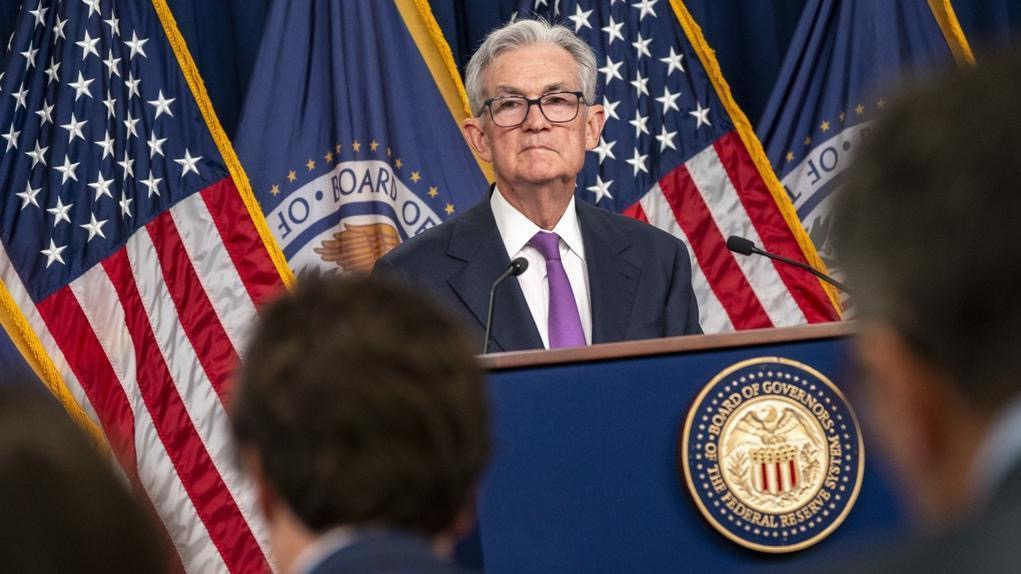
Amidst global attention, the boots of the Federal Reserve's September interest rate meeting have finally landed. On the early morning of Beijing time on the 21st, the Federal Reserve issued a resolution to maintain the target range of the federal funds rate at 5.25% -5.5%, the highest level in 22 years, which is also in line with the current expectations of the US market.
This resolution means that the Federal Reserve's interest rate hike storm has suddenly come to a halt. But the dot matrix chart released by the Federal Reserve at the same time shows that it may raise interest rates again this year.
The speech by Federal Reserve Chairman Powell at the post interest rate conference still sends a signal of 'hawkish'. He said that controlling inflation "still has a long way to go," and the Federal Reserve will focus on the risks posed by high inflation to the US economy in the coming time.
Since the Federal Reserve launched this interest rate hike cycle in March 2022, there have been 11 intensive rate hikes to curb high inflation, raising interest rates from close to zero to 5.25% to 5.5%, reaching the highest level in 22 years. The cumulative rate hike has reached 525 basis points. Industry insiders point out that this is a radical interest rate hike policy that has never appeared since former Federal Reserve Chairman Paul Volcker fought inflation in the 1980s.
From the perspective of rate hike rhythm, a single rate hike gradually increased from 25 basis points to 75 basis points, and there were four consecutive rate hikes at the 75 basis point level, which is also the fastest rate hike speed in nearly 40 years. In February of this year, the Federal Reserve slowed its interest rate hike for the first time to 25 basis points and suspended it in June, but then raised it by 25 basis points in July.
The Federal Reserve reserved the possibility of further interest rate hikes in the wording of the resolution. The dot matrix chart shows that most FOMC members expect another interest rate hike within the year, and policy makers also believe that the degree of policy easing will decrease next year.
The US stock market has reacted strongly to this. Just as Powell delivered his speech, the three major indices of the US stock market collectively plunged, transitioning from positive to negative, with the Dow's largest intraday decline exceeding 341 points. US treasury bond were also sold off, with the yields of two-year, five-year and 10-year US treasury bond all rising to the highest level in more than 10 years.
From a practical perspective, the market is more concerned about whether this pause in interest rate hikes will become a signal of the end of this cycle of interest rate hikes, and whether it will thus end the tightening cycle. The aggressive rate hikes by the Federal Reserve and the long-term maintenance of a high interest rate environment pose significant risks to the US economy. Industry insiders point out that although the Federal Reserve has raised its expectations for the US economy, the risk of economic recession still exists.
Some analysts believe that in this dot matrix chart, the Federal Reserve's outlook for next year is clearly more hawkish, which is one of the most worrying risk points for the market. In addition to the dot matrix chart, the FOMC members' outlook for the US economy also shows a characteristic of "rising GDP growth rate and persistent inflation".
Miller, President of Summit Financial Consulting, said, 'We have always believed that we are in an economic recession. This is a continuous recession, but it has been covered up to some extent. However, our basic view of the US economic recession has not changed.'
A recent public opinion survey by US media also showed that 61% of respondents believe that further tightening of monetary policy by the Federal Reserve will lead to a recession in the US economy at some point in 2024. The ongoing series of issues in the United States, such as the workers' strike in the automotive industry and the sharp drop in technology stocks, all have the shadow of radical interest rate hikes and greatly exacerbate the possibility of economic recession. This is an increasingly vicious cycle.
Optimistically speaking, a soft landing of the US economy is still possible, which is a goal that various functional agencies in the United States, including the Federal Reserve, have been striving to achieve. However, radical interest rate hikes to control inflation, leading to an economic recession, have always been a hidden concern for the American people.

The South Korean political arena has once again been embroiled in a public controversy over a judicial investigation that has shaken the entire nation.
The South Korean political arena has once again been embroi…
On the morning of December 29th local time, the precious me…
According to the US media Barchart, recently, the fluctuati…
On December 29th, Mar-a-Lago in Florida, USA, witnessed a h…
SoftBank Group announced on Monday that it has agreed to ac…
Recently, the US State Department issued a visa ban, adding…